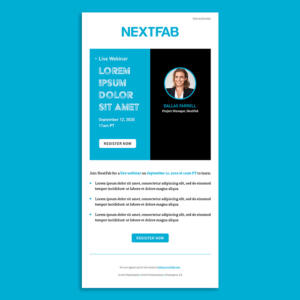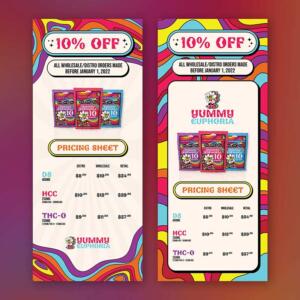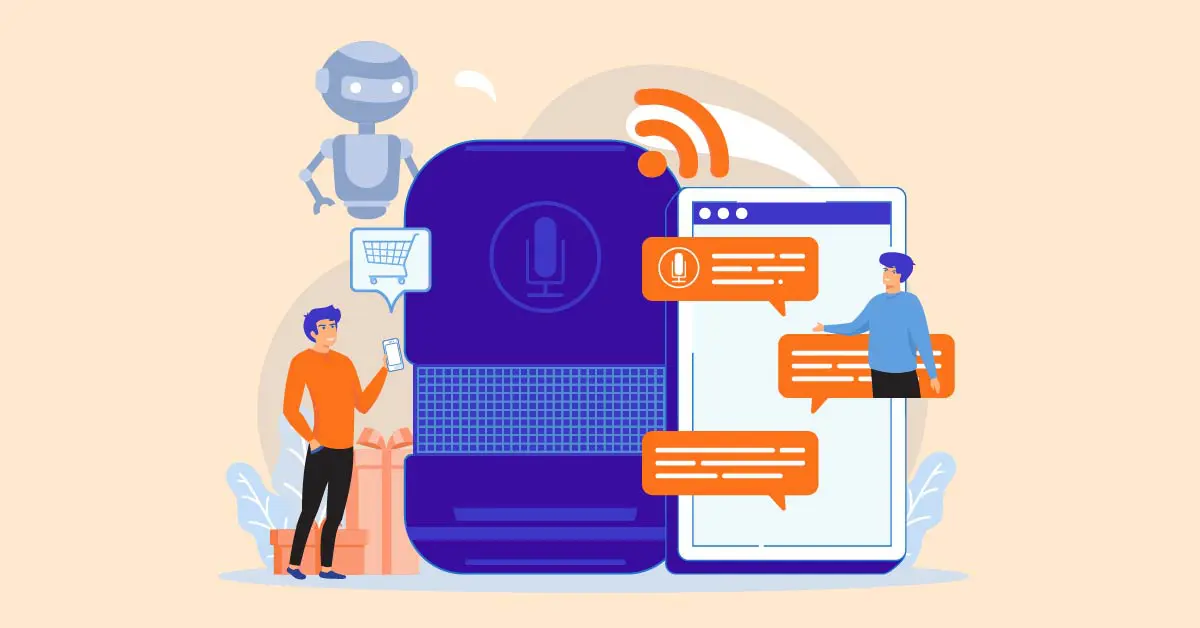
Ecommerce has become a vital part of our economy. Global ecommerce revenue is projected to increase by 39% by 2027, making it a highly lucrative retail market. And this is why ecommerce entrepreneurs should look at the top ecommerce trends to stay ahead of the competition. AI, AR, voice search, personalized shopping and more! Below are the top ecommerce trends you can expect this year.
1. Voice search

Consumer behavior is erratic. Businesses alter their interactions with customers from time to time to cater to their purchasing demands. That includes online shoppers, which is why voice search is one of the ecommerce trends that online customers will encounter more in 2023. Since online shoppers prefer seamless and convenient shopping, voice search is becoming more in demand in the online world.
It works the same way as search engines, except it’s integrated within ecommerce websites. Instead of consumers using their hands to type, they’ll enjoy the convenience of using their voices to search for items. It’s considered a “smart search” because it uses artificial intelligence (AI) to optimize online searches.
Although it sounds easy-peasy, the voice assistant would have to go through various steps to process the information. They would have to filter sounds, digitize voice search queries, do voice analysis, connect to data sources, and translate information.
The top players in the voice search market are:
- Amazon
- Apple
- Avnera
- Baidu
- Fabriq
- KaKao
- Jam Audio
- Meta Platforms
2. Augmented Reality (AR)
One of the challenges of shopping online is the inability to see and experience a product in-person before buying. Enter augmented reality, an innovation that lets you discover the future of ecommerce
Today, major retailers use AR for virtual try-ons and interactive 3D product views, helping shoppers visualize products and increasing buyer confidence. From visualizing the newest styles on yourself to seeing how a sofa will look in your living room, AR brings “seeing is believing” to a whole new level.
3. Artificial Intelligence (AI)

AI or artificial intelligence is evident in ecommerce, and people interact with AI solutions when browsing online. For example, installing chatbots is an excellent way to engage with inquiring shoppers. This allows consumers to communicate with an available salesperson at any time of the day.
Also, chatbots are helpful when covering different time zones and providing virtual customer service 24/7.
In addition, e-commerce businesses are now using AI to personalize product recommendations and optimize the supply chain. Specifically, generative AI can help buyers find products, answer their questions or give recommendations, complete orders, and even process refunds.
4. Mobile commerce
Ecommerce technologies are moving forward, which means virtual stores are also moving from desktops to mobile phones. Most of the world’s population owns mobile phones, making this avenue the best place to shop online. As an ecommerce retailer, catering to mobile shoppers is key to increasing sales. The contribution of mobile commerce in all ecommerce has been on the rise and is projected to reach 62% in 2027.
However, mobile shopping has a few optimization requirements to maximize ecommerce sales. Here are a few tips on how to make your website enjoyable for mobile viewing:
- Improve your website’s loading time. Ensure your website will load fast so you don’t get high bounce rates. Consumers hate waiting for your site to load on their mobile phones. Most ecommerce stores rely on images for sales, but sometimes these images are the culprits of slow loading time. Optimize your images so your website loads within two seconds on mobile phones.
- Keep your menu simple. Navigation is key to excellent user experience. Make all your menu options clear and visible. Experts suggest that consumers must be able to find what they’re looking for in three clicks.
- Keep pop-ups mobile-friendly. Pop-ups provide a different experience on mobile, as they’re sometimes too annoying. Ensure your pop-ups are optimized, making them suitable on smaller screens.
5. Sustainable shopping

Sustainable shopping is one of the most crucial ecommerce trends in 2023. Consumers prefer brands that have principles and purpose behind their operations. And with the tons of carbon dioxide businesses release into the atmosphere, it’s only fitting to go eco-friendly.
Here are some ways you can make shopping sustainable for your virtual store:
- Offer eco-friendly delivery options, such as electric scooters, bicycles, etc.
- Eliminate plastic packaging and packaging redundancy
- Use recyclable and reusable packaging
- Avoid packing small items with large packaging
- Write detailed descriptions to avoid returning the items
- Don’t offer a return policy
- Ship orders in bulk
- Sell eco-friendly items
6. Versatile payment methods
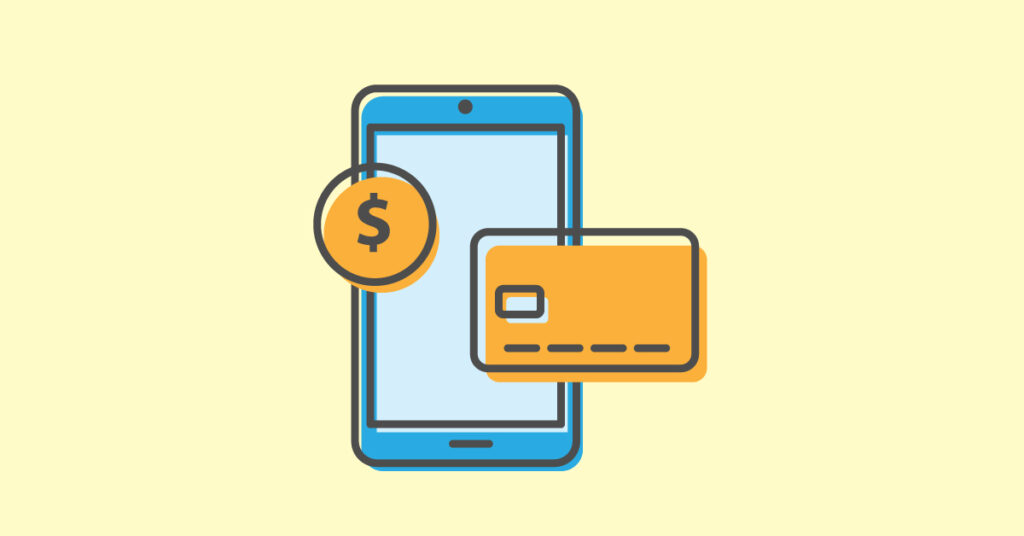
Online shoppers have their preferred payment method nowadays. If your ecommerce store isn’t leveraging the top digital payment methods, you could lose customers by the minute!
Allowing customers to pay via different payment apps is critical for user experience. Digital wallets, for instance, are becoming more popular when it comes to online shopping. Some of the most popular payment apps you must integrate into your online store are:
- Apple Pay
- PayPal
- Cash App
- Venmo
- Zelle
- Google Pay
Another ecommerce payment trend is the “buy now, pay later” (BNPL) system. This allows shoppers to pay for items through monthly installments. Some of the apps you can use are Walley, Klarna, AfterPay, and ClearPay.
Finally, QR codes are also prevalent in ecommerce because it offers speedy online shopping. Consumers can scan the code to view the list of items, order, and pay without opening another app.
7. Social commerce
Seeing most of your customers on social media is commonplace these days. This is why ecommerce retailers are tapping into social commerce to cater to users who frequent these platforms. Pinterest, TikTok, Facebook, Instagram, and Snapchat are a few ecommerce platforms you can start with.
But it doesn’t mean customers will come running to your social platform. Ensure your social profile is also optimized for selling by doing these tips:
- Only focus on the proper channels where your customers are
- Publish high-quality content
- Invest in professional and quality graphic design
- Offer a seamless checkout process
- Work with influencers
- Engage with your customers
- Leverage user-generated content
- Try live shopping
8. Personalized shopping
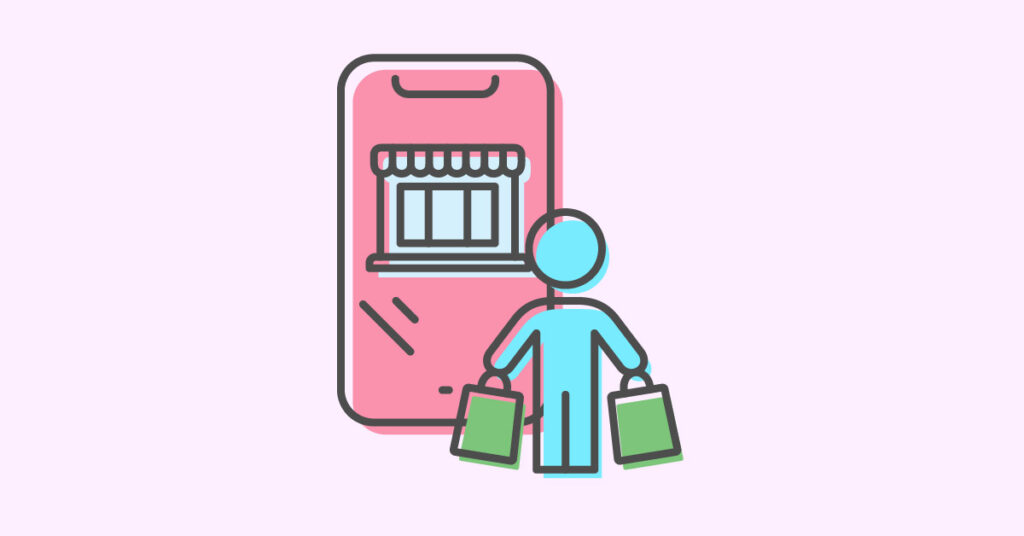
Data is where the money is in today’s world. If online store owners don’t leverage data, they miss out on creating an incredible customer journey. On the other hand, consumers are happier with brands offering a personalized shopping experience. They tend to support these brands more, increasing the potential of word-of-mouth marketing.
To optimize your personalization strategy, try these tips:
- Get to know your customers by creating surveys and quizzes
- Segment your audience for marketing tactics
- Offer intelligent product recommendations
- Apply retargeting methods
- Allow product customization
- Target customers by geographical location
- Send marketing emails based on consumer behavior
9. Subscription Services
Subscription services are a top ecommerce trend that has taken over several e-commerce industries. Food and beverage brands, clothing rental services, and fitness programs are some of the popular sectors that entered the subscription economy.
For many ecommerce platforms, this business model is attractive because it offers continuous revenue and fosters customer loyalty. Combining subscription services with a loyalty program gives shoppers access to exclusive discounts, new products and services, and personalized customer support.
How Penji Can Help Your Ecommerce Business
These ecommerce trends will reach more virtual stores in 2025 and beyond. As ecommerce entrepreneurs, you want your website to reach as many online shoppers as possible to increase sales.
On top of these trends, another crucial aspect of ecommerce advertising is graphic design. The images are your online store’s first promotional effort to appeal to more target audiences. That said, keep your ecommerce website designs topnotch by hiring professionals who know the ins and outs of visual communication.
Are you looking for professional graphic designers to help you with e-commerce design and advertising? Subscribe to Penji for high-quality, unlimited graphic designs and revisions at flat monthly rates.








